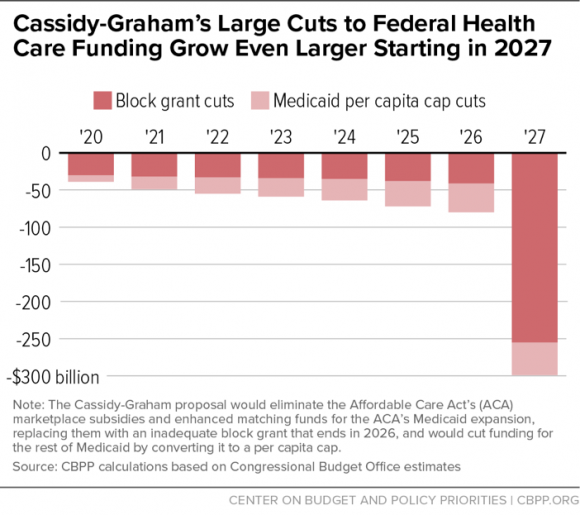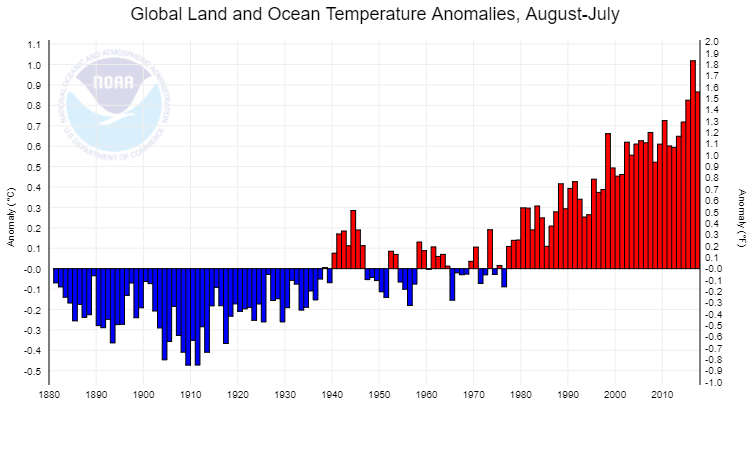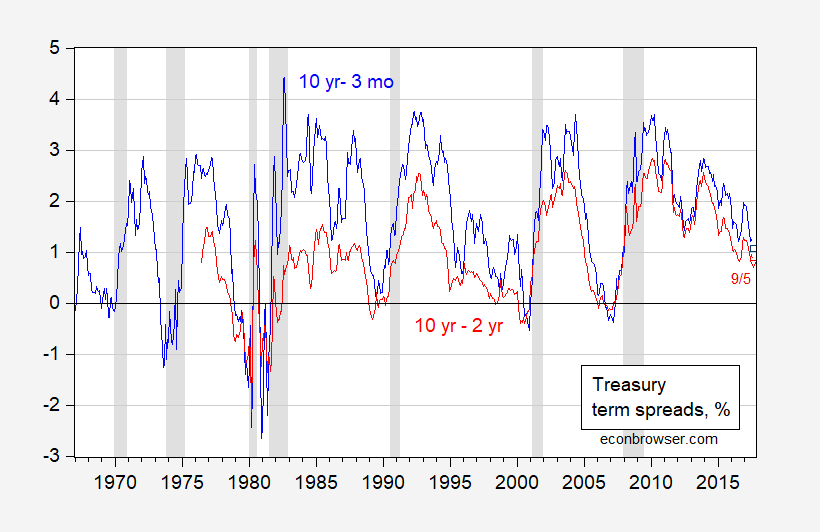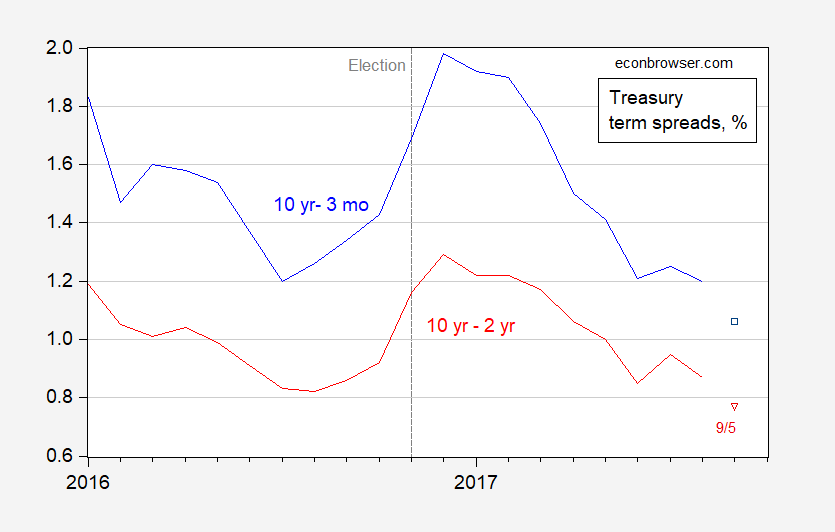Even more draconian than outright repeal.

Source: CBPP.
Even more draconian than outright repeal.

Source: CBPP.
I received this message from USDA yesterday; it reminded me of some other adjustment costs of climate change.
U.S. Secretary of Agriculture Sonny Perdue today announced that wildland fire suppression costs for the fiscal year have exceeded $2 billion, making 2017 the most expensive year on record. Wildfires have ravaged states in the west, Pacific Northwest, and Northern Rockies regions of the United States this summer.
That’s just USDA; it doesn’t include Interior Department expenditures.
And is over 12,000 below April peak. Private nonfarm payroll employment is also declining, with previous months’ data revised down.
Today we are pleased to present a guest contribution written by Cécile Couharde (EconomiX-CNRS, University of Paris Nanterre), Carl Grekou (CEPII), Anne-Laure Delatte (CEPII, EconomiX-CNRS and CEPR), Valérie Mignon (EconomiX-CNRS, University of Paris Nanterre and CEPII) and Florian Morvillier (EconomiX-CNRS, University of Paris Nanterre).
The widening and persistence of current account disequilibria at the international level have refocused real exchange rate distortions at the core of international debates. What are the exchange rate adjustments needed to correct excessive imbalances? How to assess whether a currency is fundamentally misaligned, i.e. under- or over-valued? We introduce a new database, EQCHANGE, which includes nominal and real effective exchange rates, as well as equilibrium real effective exchange rates for more than 180 countries from 1973 onwards. It represents the longest and largest publicly available database on equilibrium exchange rates and corresponding misalignments.

Corrected Source: NOAA, accessed 9/13/2017.
Update, 9/13, 8:15am Pacific: A common refrain is that it’s been hotter in the distant past. I think it’s important to remember that while there has always been variation in temperatures, a question is whether temperatures have changed so rapidly in such a short period of time in a time (post-dinosaur, e.g.). If adjustment costs are quadratic, well, the first derivative (gradient) matters. To that end, consider the following graph, and the movement over the most recent period.
Source: CC BY-SA 3.0, [link].
Notice the steep ascent up to 2004; the global land/sea anomaly in Figure 1 is nearly 0.4 c higher in 2016 than 2004 (12 month thru December)..
Is this how we should be choosing the Fed Chair? From WaPo:
As I was compiling background notes for the new semester, I found the current level and trend in the term spread of interest.

Figure 1: Ten year minus three month Treasury spread (blue), and ten year minus two year spread (red), %. Observations for September are 9/5. NBER defined recession dates shaded gray. Source: FRED, Bloomberg, NBER and author’s calculations.
Run the probit regression
recessiont+6 = -0.81 -0.474×(GS10-TB3MS)t + 0.065×TB3MSt + ut
over the 1967M01-2017M02 period (McFadden R2 = 0.24); the implied probability of recession is 10% for February 2018.
Using a specification without the level of the short rate included leads to a slightly higher probability, 14% or so.
The detail is also interesting. The spreads are smaller than they were in October 2016.

Figure 2: Ten year minus three month Treasury spread (blue), and ten year minus two year spread (red), %. Observations for September are 9/5. Source: FRED, Bloomberg, and author’s calculations.
From Reuters:
President Donald Trump on Saturday said he would discuss the fate of a five-year-old U.S.-South Korean free trade deal with his advisers next week, in a move that could see him pull out of the accord with a key American ally at a time of heightened tensions on the Korean peninsula.
The Kansas City Fed’s Jackson Hole symposium this year focused on the causes, implications and remedies for the slowdown in economic growth. Major themes revolved around productivity, fiscal policy, and international trade. Here I discuss some of the major points relating to international trade and inequality, encompassing a paper by Nina Pavcnik (Dartmouth), comments by David Dorn (Zurich), and panel remarks by Ann Harrison (UPenn), Catherine Mann (OECD), Peter Schott (Yale), and John Van Reenen (MIT).